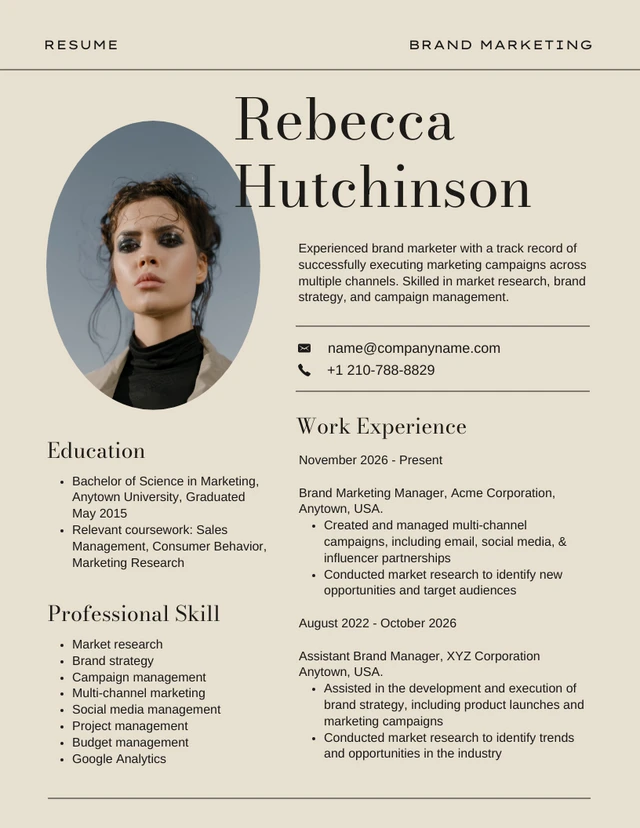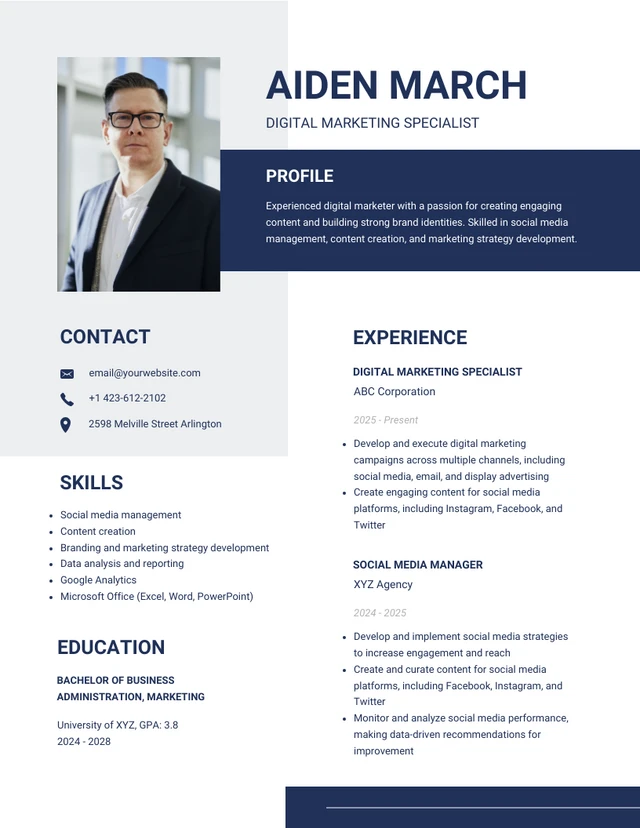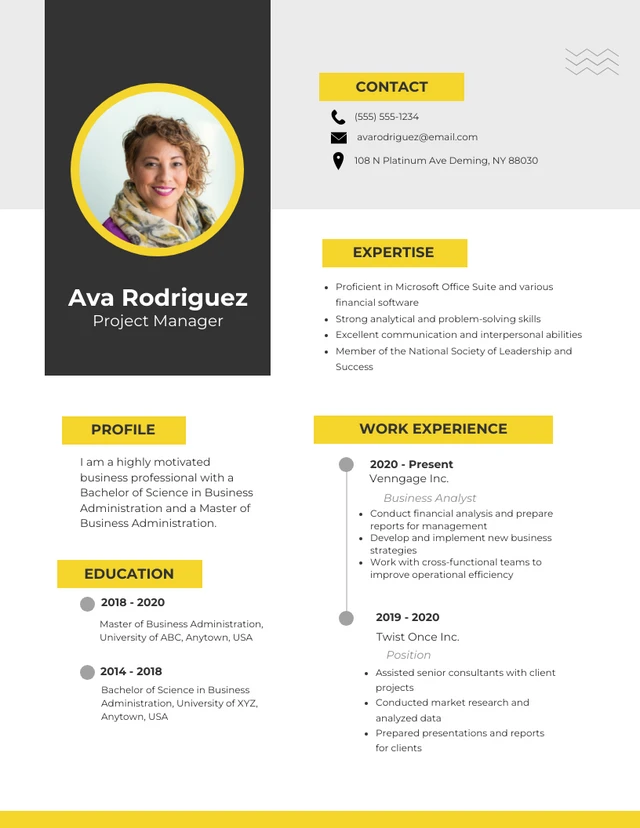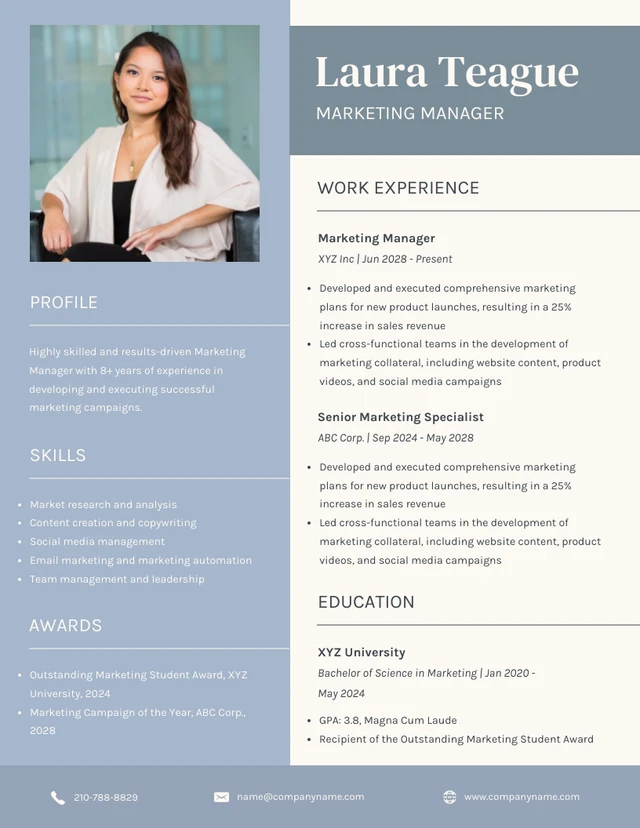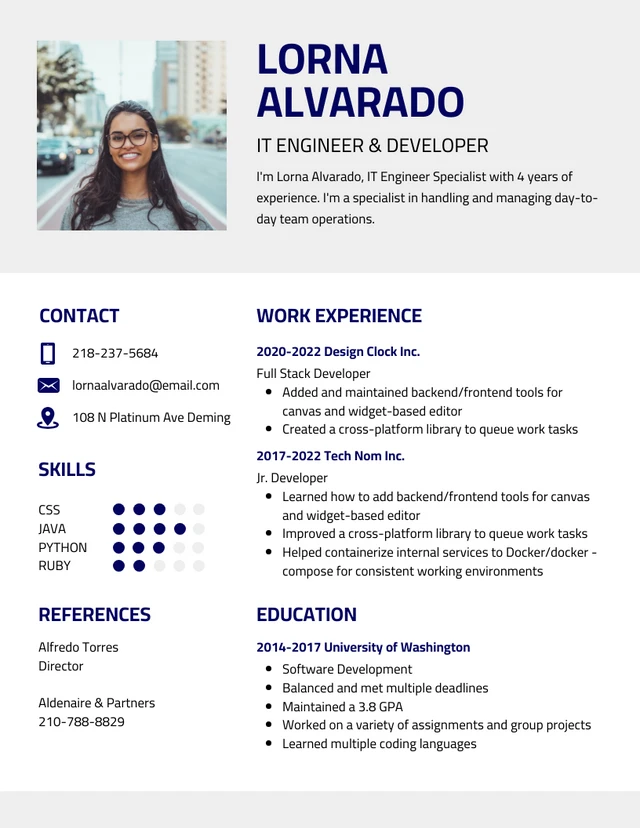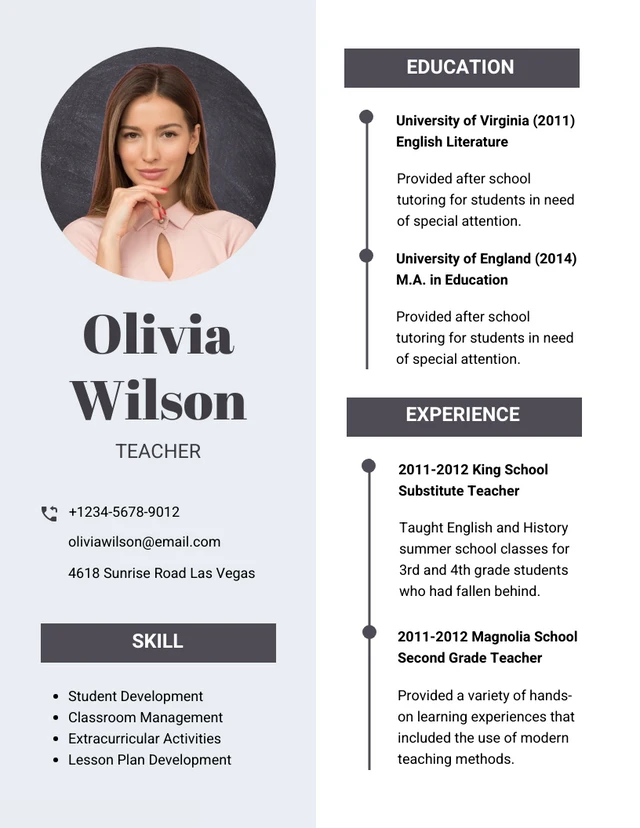
Are you applying to jobs with a resume? According to an eye-tracking study, you have 7.4 seconds to make an impression.
So, how do you make a resume that stands out? The answer is simple — make it visually appealing.
Besides visual appeal, your resume must also convince employers why you’re the best person for the job and include relevant details. Otherwise, forget landing interviews.
In this post, I’ll show you how to make a resume that grabs attention. One easy way to do this is to use a Free Resume Maker or resume templates to optimize outcomes.
Click to jump ahead:
- Choose the approach
- Resume writing guide
- Resume mistakes to avoid
- Resume templates and examples
- Conclusion
Choose the right approach
Most people fall into two categories when creating a resume: those who want a structured approach (resume builders and templates) and those who want to be more hands-on (manual creation).
- Online resume builders: Makes resume creation easy with templates since pre-made layouts (with content) can be edited to suit different job experiences.
- Manual resume writing: This method requires using a text tool like Word for more control over layout and content.
Effective resume writing guide
Ready to learn how to create a resume that gets you noticed? Make sure to read each tip below carefully.
Select the correct resume format
The following three resume formats (chronological, functional, and combination) cover most use cases imaginable.
- Chronological: Ideal for candidates with a continuous work history and experiences listed in reverse order.
- Functional format: Focuses on skills and experience rather than specific jobs. This format is suitable for career changers or those with gaps in employment.
- Combination format: Blends both the chronological and functional format. These resumes are perfect for highlighting transferable skills and those with little work experience (like students).
Build your resume structure
A clear and organized resume structure is critical if you want a response. Why?
Like most of us, recruiters scan a resume to find information on qualifications, experiences, educational background, contact information, etc.
Here’s how to structure your resume and cover all your bases.
Provide your contact information
Include your full name, professional email address, and phone number in your resume.
To really stand out, you can even add a link to your LinkedIn profile (though this optional).
Provide a summary or objective statement
Provide a summary statement (1-3 sentences max) at the top of your resume highlighting your skills, experience, and/or career goals.
Showcase your work experience
This section is the heart of your resume and should provide an overview of your past experiences.
Use a reverse-chronological order when listing past workplaces and include the following details.
- Company name
- Job title
- Dates of employment
- Key accomplishments using bullet points and action verbs
Include your education
List the degrees you’ve completed (including the major, institutions, and years attended).
If you’re a fresh graduate without much work experience, you can also list your coursework, scholarship, or your GPA (especially if it’s high).
Highlight your skills
Showcase a combination of hard (technical) and soft (interpersonal) skills relevant to the job you’re applying for.
Also, use keywords from the job description to optimize your application for easy recognition by applicant tracking systems.
Structure your work experience
When listing your work experience, highlight achievements and the value you brought to each role. This helps recruiters see what you’ve done and how well you’ve done it.
Here’s how you should structure your work experience.
- Use reverse chronological order: Start with your most recent position and work backwards.
- Focus on your contributions: Focus on achievements in each role and demonstrate your value. Use metrics (example: “Increased sales by 15%”) when possible.
- Use strong action verbs: When describing your responsibilities and accomplishments, use action verbs that convey initiative and results (example: “managed,” “developed,” “spearheaded”).

Format for readability
Your resume needs to make an excellent first impression — that is, it needs to be visually appealing to stand out from the pile of applications.
Make good use of white space, add clear headings, and test the resume to see if it’s easy to scan. Here’s what you should keep in mind.
- Use clear fonts like Arial or Calibri because they help ensure your resume appears neat and easy to scan by hiring managers.
- Apply consistent formatting to present a cohesive and organized appearance.
- Ensure adequate white space to separate different sections and elements of your resume.
Tailor your content
Generic resumes are a no-no. To stand out from the competition, customize your resume for each role.
This shows potential employers that you’ve done your homework and are genuinely interested in the opportunity.
Here are some tips on how to tailor your resume for different jobs.
- Identify relevant skills required: Read job descriptions carefully and research information about the company. Look for specific skills, qualifications, and keywords emphasized in job posts.
- Use keywords throughout your resume: Use the keywords and phrases identified in job descriptions to describe your responsibilities and achievements.
Write a compelling summary statement
A well-written professional summary or objective statement helps recruiters understand who you are.
This statement is probably the first thing recruiters will read to decide if to continue with your application or bin it.
Here are some tips on how to write a compelling summary statement to avoid the delete.
- Keep it brief: Aim for clarity and conciseness in your summary statement. Limit it to 1-3 sentences to ensure it’s quick and easy for recruiters to read and grasp your professional essence.
- Use action verbs and quantify achievements: If possible, start sentences with action verbs like achieved, managed, or developed to convey accomplishments. Also, quantify your achievements with numbers, percentages, or results to provide evidence of your capabilities.
Include your education
The education section showcases your qualifications, supporting your professional credibility and suitability for a role.
In the education section of your resume, include the following.
- Degrees, majors, and institutions attended
- Relevant coursework (optional)
- GPA (optional)
Highlight your skills
This section is your chance to showcase your skills and convince employers why you’re the best candidate for the job. It also signals you’ve read the job post and understand what the employer seeks.
Here’s how to highlight your skills in a resume.
- Focus on hard and soft skills: Include a mix of hard (technical) and soft (interpersonal) skills relevant to the job description.
- Use keywords: Using keywords mentioned in the job posts improves your chances of getting noticed by applicant tracking system software.
Proofread your resume
A typo-ridden resume reflects poorly, whereas an error-free resume helps make a positive first impression.
Proofread your resume meticulously for any grammatical errors or typos. You can also ask a trusted friend or colleague to review your resume for errors or areas for improvement. Another great tip is to use a resume review service to make sure your CV is as polished as possible.
Keep your resume up-to-date
An up-to-date resume makes it easy to reflect on recent achievements and increases your application efficiency as you have a readily available application.
Here are some common resume mistakes to avoid
When making your resume, make sure you avoid each of the following.
- Not tailoring your resume to each job
- Not using keywords throughout your resume
- Having a resume that is too long
- Using an unprofessional font or layout
- Having errors in grammar or spelling
For more resume resources, check out our other posts!
Resume templates and examples
Now that you’ve seen the basics of making effective resumes, let’s go through some examples for design inspiration.
Student resume
Student resumes focus on academic background, skills, extracurricular activities, and internships to help new graduates land their first job.
Tech resumes
Tech resumes are used by software developers, IT professionals, and engineers to highlight problem-solving capabilities and technical knowledge relevant to a position.
Teacher resumes
Teacher resumes give an overview of an educator’s teaching experience, educational background, certifications, and skills. They’re a good way to showcase your ability to manage classrooms, develop curriculum, and engage with students.
Corporate resumes
You’ll find corporate resumes used mostly in business, management, and finance. They often focus on past achievements, leadership experience, and the ability to contribute to corporate goals.
Acting resumes
Acting resumes are designed to showcase an actor’s range and experience to casting directors and agents. They usually list actors’ roles in film, television, theater, and training.
Conclusion: Create effective resumes with Venngage and land your dream interview
Unfortunately, talent alone doesn’t guarantee jobs these days. You also need an eye for design to make resumes that catch a hiring manager’s eye.
Of course, you’ll need the skill and interview well to get the job, but you can count on Venngage to get your foot in the door with effective customizable resume templates for all types of industries.































